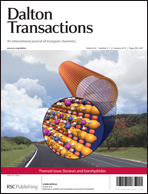Replacing a boron vertex in a [BnHn]2− cluster with a smaller atom, e.g. carbon, results in the distance from that atom to the polyhedral centroid being shorter. This forms the basis of a simple but very effective method of distinguishing between B and C atoms in (hetero)carboranes that have been studied crystallographically, the Vertex-to-Centroid Distance (VCD) method. Examples of well-characterised icosahedral and sub-icosahedral closocarboranes, nidocarboranes, icosahedral metallacarboranes and supraicosahedral metallacarboranes are used to illustrate the generality of the VCD method. In this process a number of structures are identified in which the method suggests B/C disorder not previously recognised and some structures in which it appears that a cage C atom has been wrongly assigned. The largest sub-group of heterocarboranes is the family of 3,1,2-MC2B9 compounds, and for these species consideration of Exopolyhedral Ligand Orientation (ELO) can sometimes be used to quickly suggest when a literature structure is suspect in terms of cage C atom positioning. The crystal structure of one such compound, 3,3-NO3-3-PPh3-3,1,2-closo-RhC2B9H11, has been redetermined and the correct location of the cage C atoms established.

You have access to this article
 Please wait while we load your content...
Something went wrong. Try again?
Please wait while we load your content...
Something went wrong. Try again?


 Please wait while we load your content...
Please wait while we load your content...